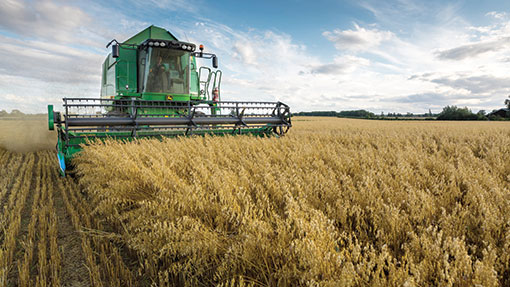Sow your winter oats with care

Winter oats may be more resilient to conditions at drilling than other crops, but extra time creating a good seed-bed can pay dividends. Louise Impey reports.
The highest yield from winter oats comes from drilling in mid-September, although holding back a few weeks will reduce the risk of diseases developing and lodging occurring.
“With oats, just like other cereal crops, there are advantages and disadvantages from earlier drilling,” says Herefordshire-based independent agronomist Antony Wade.
Early drilling can produce top yields and help reduce winter kill, but growers can run into higher costs with controlling diseases and pests.
“A hard winter can cause winter kill if the crop isn’t well established by the time the colder temperatures arrive. So early drilling can be an advantage in a cold year or on exposed sites,” he says.
However, the potential downsides of early drilling include a greater risk of mildew developing and more likelihood of barley yellow dwarf virus (BYDV) infection, plus a higher risk of lodging with older varieties if crops are thick.
See also: Opportunities grow for winter oats and rye
In practice, sowing dates for winter oats do range from mid-September right through until November, but most crops in England will be sown in the first half of October.
“Oats tend to follow the other major crops in terms of priority, so the final date will depend on when wheat and oilseed rape drilling has been completed. Fortunately, they are good at coping with any delay and usually get away well,” he adds.
Mr Wade advises that seed-bed preparation should be carried out as for any cereal crop, with a fine, firm seed-bed preferred.
“It is important to consolidate the seed-bed as oats can be susceptible to frost lift if we have penetrating frosts. Rolling helps to minimise this and makes them less susceptible to winter kill,” he says.
Grassweeds can be an issue and field selection should take that into account, as there are few herbicides approved to control these weeds.
“The crop is very competitive and has a phenomenal tillering ability, which works in its favour against weeds. But the chemical armoury for dealing with grassweeds in oats is extremely limited,” Mr Wade says.
“So you need to make best use of cultural control techniques, such as stale seed-beds, prior to drilling if you have grassweeds.”
For this reason, rotational ploughing ahead of oats is often carried out, and can be used to bury blackgrass seed to prevent it germinating.
He recommends that seed rates should be based on a target plant population of 150-200 plants/sq m in the spring, with adjustments being made for later-sown situations. “Expected emergence falls in these situations so rates should be pushed up to compensate,” he says.
Seed is usually supplied with a single-purpose seed treatment on it, but the Deter seed dressing products can also be used.
“Oats do get BYDV, especially if they are drilled early, so this type of product provides up to six weeks of protection from aphids. However, mid-October drilled crops, which won’t emerge until late October, are less likely to need protection from virus-carrying aphids,” he adds.
Severe slug attack on oats is rare as the pest does not appear to have a taste for the crop.
“Whether that’s to do with the fact that oat leaves are quite hairy, no one is sure. But slugs don’t like to graze them and only if there are very high numbers present do we advise using slug pellets,” Mr Wade says.
Otherwise, oat mosaic virus is only a problem if the crop has been grown frequently in the rotation. Varieties do vary in their susceptibility to the soil-borne virus, with Gerald being susceptible but current market leader, Mascani, showing resistance.
Oats are good at scavenging nitrogen so careful fertiliser planning that takes account of the soil nitrogen supply (SNS) reserves is required, to minimise any lodging risk.
“The total requirement of 90-120kg/ha depending on SNS is supplied in the spring,” he says.
HGCA harvest results
HGCA harvest results show that the highest-yielding winter oat variety in 2014 was newcomer Rhapsody, with a yield of 108.
Also performing well was Balado, at 105, while the market leader and millers’ favourite, Mascani, achieved 98.
The best candidate winter oat varieties were Selwyn at 108 and Elgar at 106.

